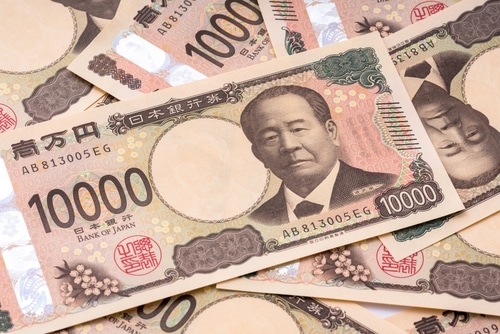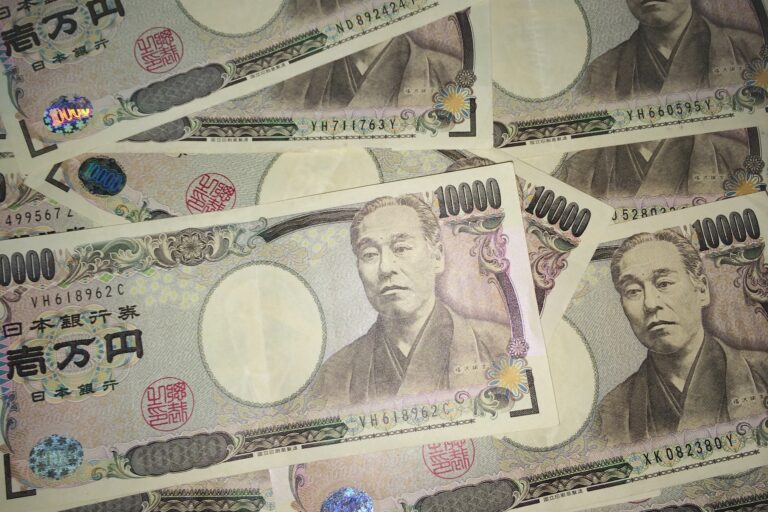The Japanese Yen (JPY), symbolized by “¥” and written in Japanese as “円,” is more than just Japan’s national currency—it’s a global financial heavyweight. Issued by the Bank of Japan (BOJ), the Yen plays a critical role in international markets, ranking as the third most traded currency worldwide after the U.S. Dollar (USD) and the Euro (EUR). Known for its stability, security features, and connection to one of the world’s largest economies, the Yen reflects Japan’s influence in global finance, trade, and investment.
Denominations and Physical Currency
Banknotes:
- ¥1,000
- ¥2,000 (rarely used)
- ¥5,000
- ¥10,000
Coins:
- ¥1
- ¥5 (this one stands out. It has a hole in the middle.)
- ¥10
- ¥50 (this one also has a hole in the middle.)
- ¥100
- ¥500
Notably, the ¥5 and ¥50 coins have a hole in the middle. This design is special to Japanese coinage.
Security Features
Japanese banknotes have many advanced security features to stop counterfeiting:
- Watermarks
- Holographic patches
- Microprinting
- Intaglio printing
- Color-shifting ink
These features help keep the Yen safe and strong.

Historical Context
The Yen was first used in 1871 when the Meiji Restoration started in Japan. It took the place of the Tokugawa money system, which was hard for people to use. At first, the Yen was linked to silver. Then, in 1897, it changed to be linked to gold. After World War II, the Yen was set at 360 for each US dollar. This stayed the same until 1971. After that, the Yen went to a system where the value can go up or down, as the market decides.
The Yen in the Global Economy
By May 2025, the Yen is still one of the most important parts of the global finance market. There have been some new changes in the economy. You can read more about this from the Bank of Japan.
- Inflation Trends: Japan’s core inflation rate was up by 3.5% in April 2025. This is the highest rise seen since January 2023. Price jumps in the dining and education sectors were big reasons.
- Policy Changes: The BOJ pushed interest rates up to 0.5% in January 2025. This marked a major change from the bank’s long time practice of keeping rates very low.
- Bond Market Dynamics: Yields on long-term Japanese government bonds shot
Practical Tips for Currency Exchange
1. Monitor Exchange Rates:
Exchange rates go up and down because of many economic reasons. As of May 23, 2025, 1 USD is about 143.86 JPY.
2. Optimal Exchange Locations:
- ATMs: You can find the machines in many places and they often give good rates.
- Banks and Post Offices: These places are trusted, but they may not always be open.
- Avoid Airport Kiosks: They often do not give good rates.
3. Credit Card Usage:
Most big credit cards such as Visa, Mastercard, and American Express are welcome in the city. But you will find that people use cash more in small towns and for items that do not cost much.
Sending Money to Japan
If you want to send money to Japan, think about these things:
- Transfer Services: Platforms like Remitly have good rates for exchanging money. They also have lower fees than most banks.
- Transfer Speed: How fast your money gets there depends on the service you use. It can happen right away, or it might take some days.
- Recipient Convenience: Make sure the person getting the money can use the payout option you picked. It could be sending to a bank, letting them pick up cash, or sending it to a mobile wallet.
FAQs
Are ¥2,000 banknotes still in circulation?
Yes, but people do not see them often, and they are not used much in daily deals.
Is it better to exchange currency in Japan or before traveling?
Changing money in Japan, like at ATMs or banks, usually gives you better rates than changing it in another country.
Can I use my credit card throughout Japan?
Credit cards are used a lot in big cities. You might not be able to use them in small towns or at many little shops.

